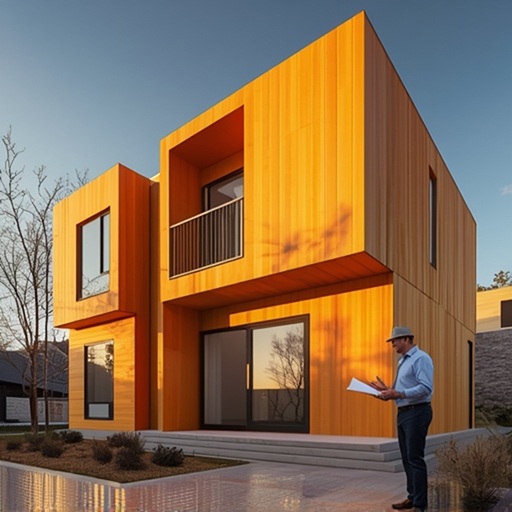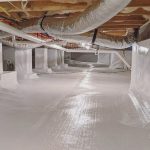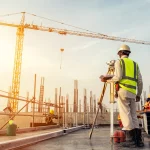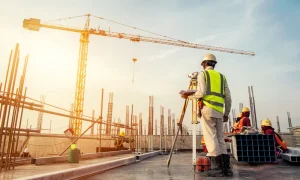
Incorporating modular wall panels also simplifies coordination between trades. Mechanical, electrical, and plumbing systems can be pre-planned into the wall design, reducing on-site clashes and rework. In one recent case study, Redbuilt achieved a 23% drop in waste and a 31% gain in project speed by integrating prefabricated systems across all structural and exterior assemblies, as reported on https://www.redbuilt.com/.
Pre-fabricated wall panels are rapidly becoming a defining force in the evolution of modular construction. With rising demand for faster project timelines and greater design flexibility, builders, architects, and developers are turning to factory-manufactured panels as a smart solution for both commercial and residential projects. Their growing popularity reflects a shift in how we approach installation, energy efficiency, and material sustainability — all without compromising on aesthetics or performance.
The Modular Shift: Factory Precision Meets On-Site Speed
At the core of prefabrication is the ability to manufacture wall panels in a controlled factory setting. This process minimizes delays caused by weather, labor shortages, or material inconsistencies. Once delivered to the site, panels are rapidly assembled, significantly cutting down the time required for wall framing and enclosure. The streamlined installation process translates to earlier occupancy, reduced labor costs, and greater scheduling control.
Efficiency in Design and Construction
Today’s prefabricated wall panels offer more than structural support. They come pre-integrated with insulation, moisture barriers, and cladding options — ensuring they’re not just quick to install but also contribute to energy savings from day one. For example, insulated panels deliver superior thermal and acoustic performance, helping to meet increasingly strict building codes. The result is a cost-effective solution that accelerates the building envelope while enhancing comfort and sustainability.
Material Innovation: Lightweight Yet Durable
Advancements in materials have made modern panels not only lighter but also more resilient. Lightweight concrete, structural insulated panels (SIPs), and glass-reinforced gypsum are commonly used to enhance strength without increasing bulk. These materials maintain structural integrity while simplifying transport and reducing the load on building foundations.
Prefabricated panels are also versatile in function. Whether used for interior partitions, structural walls, or exterior cladding, the precision of factory manufacturing ensures consistency in size, quality, and finish. That level of control is crucial for large-scale projects where uniformity and durability are essential.
Customization Without Compromise
Gone are the days when prefabrication implied a trade-off in design. Customization is now a key feature of modern wall panel systems. Panels can be tailored for specific dimensions, finishes, openings, and embedded components. From traditional brick façades to modern minimalist exteriors, the range of design options allows architects to maintain creative freedom while leveraging the benefits of modular construction.
Moreover, panels can be designed for disassembly and reuse, making them not only customizable but also aligned with circular construction practices. This sustainability-forward mindset is particularly important for clients looking to achieve LEED or WELL certifications.
Sustainability and Energy Savings Built In
By integrating insulation and reducing air infiltration, prefabricated wall panels contribute significantly to a building’s energy performance. Thermal bridging — a common issue in traditional framing — is reduced or eliminated, resulting in better thermal regulation year-round. Combined with airtight assembly and high R-value insulation materials, these systems support long-term energy savings and reduced environmental impact.
The prefabrication process itself is inherently sustainable. Factory settings allow for optimal use of materials, reduced waste, and more efficient quality control. When paired with lifecycle assessments and green material sourcing, the benefits go far beyond short-term energy gains.
Beyond the Wall: What’s Next in Prefabrication
As demand for modular and sustainable construction grows, the role of pre-fabricated wall panels will continue to expand. With ongoing advancements in digital design tools, robotic assembly, and smart materials, future panels may come equipped with integrated sensors, embedded wiring, or even adaptive insulation technologies.
Architects are already exploring how prefabrication supports net-zero goals and future-proofing strategies. From high-rise residential to healthcare facilities and educational institutions, prefabricated wall systems are proving their value across a wide range of use cases.
Free Continuity
The reshaping of construction through prefabricated wall panels isn’t a passing trend — it’s a practical evolution. Whether the goal is speed, savings, or sustainability, these panels offer unmatched value in an industry under pressure to deliver better buildings, faster. As more stakeholders embrace prefabrication, the wall is no longer just a divider — it’s a critical component of modern design and performance.








